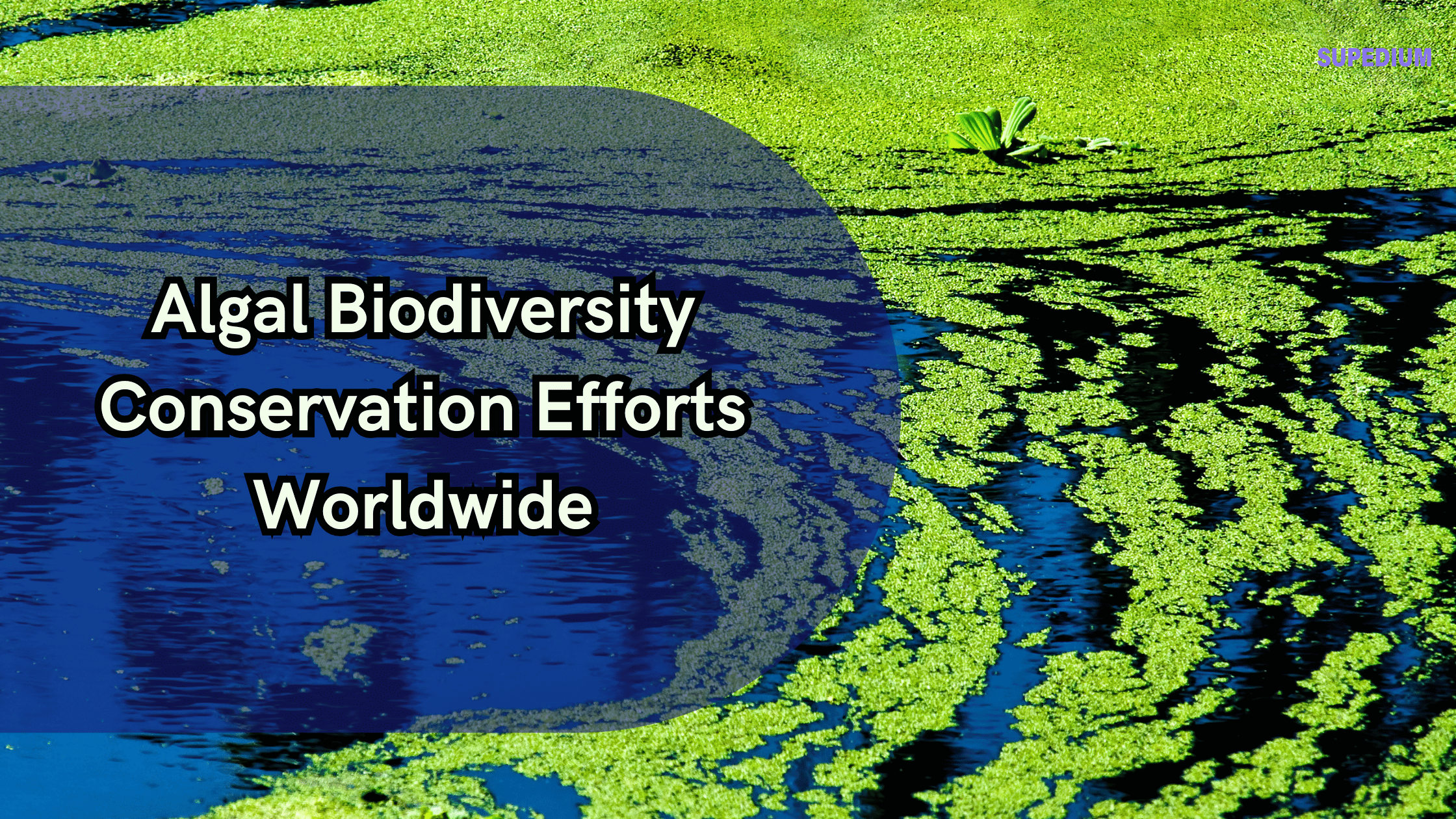Table of Contents
![]()
I. Introduction
Algae, a diverse group of photosynthetic organisms, play a crucial role in ecosystems across the globe. These organisms, ranging from microscopic phytoplankton to large seaweeds, are fundamental to aquatic environments, serving as primary producers in food webs, contributing to oxygen production, and aiding in carbon sequestration. Algae also have significant economic and ecological importance, impacting fisheries, pharmaceuticals, and climate regulation. Given their critical roles, conserving algal biodiversity is essential for maintaining ecological balance and sustaining human benefits.
II. Threats to Algal Biodiversity
A. Climate Change
Climate change poses a significant threat to algal biodiversity. Rising temperatures and ocean acidification affect algal growth and distribution. For example, warmer ocean temperatures can lead to shifts in algal species composition, with some species thriving while others decline. Ocean acidification, resulting from increased CO2 levels, can disrupt the calcification processes of certain algae, particularly coral reef-associated macroalgae.
B. Pollution
Pollution, particularly nutrient pollution, is another major threat. Excess nutrients from agricultural runoff and wastewater can lead to harmful algal blooms (HABs), which can deplete oxygen in water bodies and produce toxins harmful to aquatic life and human health. Chemical pollutants, including heavy metals and pesticides, also impact algal health by causing physiological stress and disrupting metabolic processes.
C. Habitat Destruction
The destruction of natural habitats further endangers algal biodiversity. Coastal development, such as land reclamation and construction, can lead to the loss of critical habitats like mangroves and seagrass beds, which are vital for many algal species. In freshwater environments, deforestation and land-use changes can alter nutrient cycles and hydrology, affecting algal communities.
D. Overexploitation
Overexploitation of algae, particularly through commercial harvesting, can lead to significant declines in algal populations. This is especially concerning for species that are harvested for food, pharmaceuticals, or biofuels. Unsustainable harvesting practices can deplete populations and disrupt ecosystem functions, affecting the broader ecological balance.
III. Conservation Strategies and Efforts
A. Protected Areas and Reserves
One of the primary conservation strategies is the establishment of protected areas and reserves. Marine protected areas (MPAs) are designated regions where human activities are regulated to protect marine life, including algae. Similarly, freshwater reserves are set up to safeguard critical habitats for freshwater algae. These protected areas help maintain biodiversity by providing refuge from human impacts and supporting the recovery of algal populations.
B. Research and Monitoring
Research and monitoring are essential for understanding and preserving algal biodiversity. Biodiversity inventories and monitoring programs help track changes in algal populations, assess the health of ecosystems, and identify emerging threats. Advances in research technologies, such as satellite imaging and molecular techniques, enable more accurate and comprehensive monitoring of algal communities and their responses to environmental changes.
C. Restoration Projects
Restoration projects aim to rehabilitate damaged habitats and reintroduce native algal species. For instance, initiatives to restore coral reefs often involve replanting coral and associated algae to rebuild these critical ecosystems. Similarly, freshwater restoration projects may focus on reestablishing natural flow regimes and reintroducing native algae to improve water quality and habitat conditions.
D. Policy and Legislation
Effective policy and legislation play a crucial role in algal conservation. International agreements, such as the Convention on International Trade in Endangered Species (CITES) and the International Maritime Organization’s MARPOL regulations, help protect algal species and reduce pollution. National and regional policies also contribute by regulating harvesting practices, managing water quality, and setting conservation priorities.
E. Public Awareness and Education
Raising public awareness and promoting education about the importance of algal biodiversity are vital for garnering support for conservation efforts. Outreach programs and educational campaigns inform communities about the ecological and economic value of algae and encourage sustainable practices. Community involvement in conservation activities, such as local clean-up events and citizen science projects, can further enhance the effectiveness of these efforts.
IV. Case Studies
A. Success Stories
Several successful conservation projects illustrate the positive impact of targeted efforts. For example, the restoration of the Great Barrier Reef in Australia includes initiatives to protect and rehabilitate coral reefs and associated algal communities. In Lake Baikal, Russia, conservation efforts focus on protecting the unique freshwater algal species and their habitats from pollution and invasive species.
B. Challenges and Lessons Learned
Despite successes, challenges remain in implementing effective conservation measures. Issues such as inadequate funding, conflicting interests, and the complexity of ecological interactions can hinder progress. For instance, conservation projects may struggle with balancing economic development and environmental protection. Lessons learned from both successful and problematic projects can inform future strategies and improve conservation practices.
V. Future Directions
A. Advances in Technology and Science
Future conservation efforts can benefit from advancements in technology and science. Genetic studies and biotechnology offer new tools for understanding algal genetics and enhancing conservation efforts. Innovations in monitoring technologies, such as autonomous underwater vehicles and remote sensing, provide more detailed and real-time data on algal health and distribution.
B. Global Cooperation
Global cooperation is essential for addressing the transboundary nature of many algal conservation issues. International partnerships and collaborative projects can enhance the effectiveness of conservation efforts by sharing knowledge, resources, and best practices. Organizations such as the United Nations and the International Union for Conservation of Nature (IUCN) play key roles in facilitating global cooperation and setting conservation priorities.
C. Policy Recommendations
To strengthen conservation efforts, policymakers should focus on enhancing regulatory frameworks and promoting sustainable practices. This includes updating and enforcing regulations to protect algal habitats, encouraging sustainable harvesting practices, and investing in research and monitoring programs. Effective policy frameworks can create a supportive environment for conservation and ensure the long-term protection of algal biodiversity.
VI. Conclusion
Algal biodiversity is a vital component of global ecosystems, providing essential services and benefits to both the environment and human society. However, threats such as climate change, pollution, habitat destruction, and overexploitation pose significant challenges to preserving this diversity. Through a combination of protected areas, research and monitoring, restoration projects, policy and legislation, and public awareness efforts, progress can be made in conserving algal biodiversity.
Continued research, global cooperation, and effective policy implementation are crucial for addressing current and future challenges. By fostering a comprehensive approach to algal conservation, we can safeguard these important organisms and ensure their continued contribution to ecological balance and human well-being.
Share This





Be the first to comment